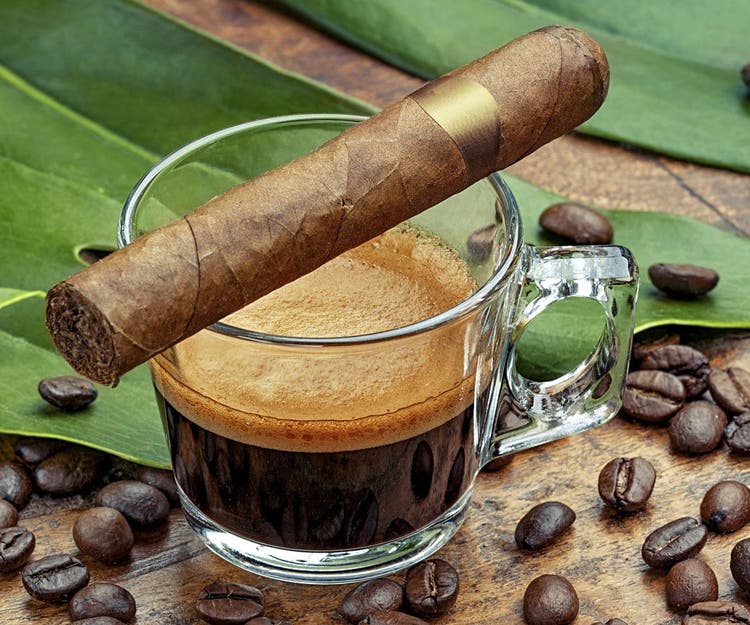
Champagne & Cigars: Dom Perignon…007…Monte Carlo…Montecristo
Here’s the deal: with the exception of the ’73 and ’76 Dommers, I personally wouldn’t care to smoke a cigar with any of the Champagnes mentioned above. Why? Because these “Grande Marque” Champagnes share one common characteristic: they all are extraordinarily delicate. Within that delicacy lie very subtle differences, differences which express a beautiful, unique personality. The higher you go on the quality scale, the more subtle and individualistic these products become. They are works of art fit for a King. And like the King, the top Champagnes do not want any competition.
My advice? If you are going to partake of any of these, please make sure you’ve got oysters and caviar, plus your favorite Bond Girl, close to hand. But not a Montecristo. Shake hands with the Count of Montecristo after your meeting with the Comtes de Champagne. And be prepared to ante up between $125 to $350 per bottle. The bargain right now is the highly rated Taittinger Comtes de Champagne Blanc de Blancs 2000, currently listed with several dealers for about $125.
Fortunately, it is easy to find many excellent palate pleasing French Champagnes a long financial step down from the sublime and (whew) expensive. I for one favor and recommend the many dry (“Brut”) Non-Vintage blends available. They are rock solid values and (like good cigars) are prime examples of the Blender’s Art.
Look for Moet & Chandon Brut Imperial, Taittinger Brut La Francaise, Perrier Jouet Grand Brut, Mumm’s Brut Cordon Rouge, Veuve Clicquot Brut Yellow Label, Piper-Heidsieck Brut, amongst others. I suggest that you do not pay the premium price asked for so-called “Vintage” Champagnes. Considerably more expensive, French Champagnes labeled as “Vintage” often are not any better tasting than the Non-Vintage versions and sometimes they are not even as good! It’s a blender’s art and “Non-Vintage” simply means “a blend of two or more years.” Judicious mixing of base wines from different harvest years affords the artisan champagne producer a great deal more latitude and flexibility in his pursuit of crafting a beautifully balanced final product. I have never been let down by a Non-Vintage French Champagne –whether famous or obscure.
Throughout the Champagne region manufacturing standards are rigorously maintained. Champagne’s reputation is at stake in every bottle. Some NV Champagnes that I’ve tasted of course have been better than others, but every one of them has always been at least very good. These benchmark products are widely available for between $25 to $50 a bottle, which is really not very much to pay for a wonderful welcome to the New Year. Treat yourself.
But if that seems a bit pricey for your budget this year, you’re still okay. Very satisfactory surrogate versions can be found, starting at around $10.00 a bottle. At this price point you’ll find Korbel for example. Korbel produces good Brut, Extra Dry, Blanc de Noirs and Chardonnay Champagne in California’s Sonoma County and it is distributed just about everywhere. Also from Sonoma, Gloria Ferrer’s excellent Brut, outstanding Blanc de Blancs and noteworthy Blanc de Noirs sell in the $15 to $20 range. Hailing from Napa Valley, Domaine Chandon’s similar product line, in basically the same price range as Gloria Ferrer, are also dependably delicious.
A personal favorite of mine comes from Washington State. The sometimes hard to find Domaine Ste. Michelle’s Blanc de Blancs is a perennial stand-out and a real sleeper at about $10.00 a bottle. Recently, for research purposes (wink, wink) I opened a DSM B de B and lit a terrific top-of-the-line medium-bodied Dominican Montecristo Classic (the Fleur de Lys on the label is embossed in gold). What a winning combination! I felt like royalty living the plush life on the cheap. The crisp clean sparkler punched up the mid-strength Monty’s flavors perfectly. I give the wine an 89 and the cigar a 90.
As carbonation adds another layer of strength to sparkling wines, pretty much all of the above selections will stand up to mild and medium-bodied cigars. When it comes to more full-bodied cigars however, I’m going to recommend pairing them with sweeter champagnes.
The other night I really enjoyed my robust, deeply flavored Alec Bradley Tempus with a bottle of San Antonio Lambrusco, imported from Italy’s vast gastronomic wonderland, Emilia, home base to Prosciutto, Parmigiano and aged Balsamic Vinegar. A slightly fizzy (“frizzante”) mildly sweet red with just the right touch of earthiness, this pasta-friendly, low-alcohol (7.5%) sparkler proved entirely Tempus-friendly, too. Happily, San Antonio’s version features the traditional champagne closure, that wire bird-cage contraption with the mushroom-shaped cork for popping –a must for festive celebrations. Inexpensive and a real crowd pleaser, it’s the Sara Lee of champagnes: Nobody doesn’t like Lambrusco. And so good with a full-flavored cigar.
To accompany the many great full-bodied cigars (Pepin, Perdomo, Padron, etc.) do not overlook the other non-puckery champagnes from Italy, like Asti Spumante (you just can’t go wrong with Martini & Rossi) and the pleasantly fruity, yet decidedly less sweet Prosecco. At about $12.00 a pop, you’ve got party and cigar wine galore.
Two important things to remember:
Wishing you a safe, happy, healthy, and prosperous New Year
About the Author
Larry Tepper, noted wine industry professional and wine writer, is best known for conducting educational wine and food pairing classes for three universities: California State University Northridge (CSUN), UCLA and USC over a period which spans more than twenty-five years. As managing editor of the Melrose Avenue (Hollywood-based) Nucleus Nuance Restaurant and Wine News, his “Celebrity Wine Interview” column appears regularly. Larry has also produced and hosted more than 60 segments of Continental Cablevision’s Let’s Talk Wine program.